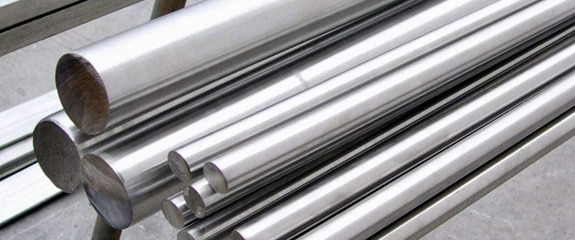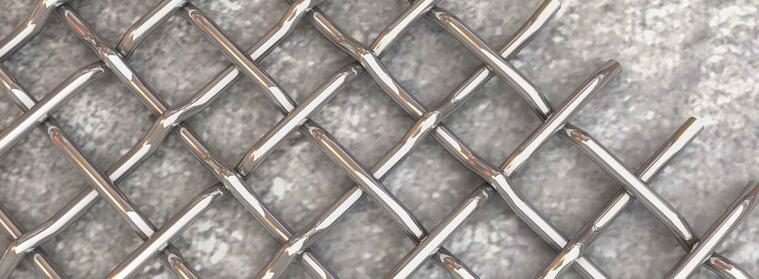Why Must Architectural Mesh Come From the Same Material Batch?
Architectural Mesh - Exterior | Architectural Mesh - Interior
Architects are often faced with the task of creating homogenous designs. Every design material they use must complement each other and create an aesthetic that portrays uniformity.
Architectural wire mesh is known for creating a lustrous atmosphere that puts a dynamic spin on modern design. But if a uniform appearance is what you're looking for, you must ensure your architectural mesh comes from the same batch of material.
Here at W.S. Tyler, we understand the architectural design process can be delicate and demands attention to detail. This is why we strive to leverage our 20 years of architectural mesh experience to help you weave your vision into reality.
We wrote this article to provide insight into the importance of having architectural mesh produced from the same material batch. You will learn:
- The definition of architectural mesh
- The alloys used to weave architectural wire mesh panels
- Why these alloys are used
- Why architectural mesh must be produced from the same batch of material
What Is Architectural Wire Mesh?
Architectural wire mesh is best defined as decorative panels fabricated from individual stainless steel wires. These panels are formed using a centuries-old weaving technique similar to the weaving techniques used to weave rugs and clothing.
To best accommodate the specific needs of a given architectural design process, most parameters of each mesh panel can be customized. This includes the wire diameter, panel length, color, panel width, percentage of open area, and weave pattern.
What Alloys Are Used To Fabricate Architectural Wire Mesh?

Typically, architectural grade 316 stainless steel is used to weave architectural wire mesh panels. However, a 304 stainless steel can also be used, but it should generally be reserved for interior applications.
Now, the current price difference between 304 and 316 stainless steel is pennies on the dollar. It is for this reason that 316 is the recommended alloy, as it is not going to be that much more expensive but will provide substantial corrosion-resistant benefits.
NOTE: While 316 is the more expensive of the two, there are instances where 304 can be more expensive to implement.
As it is not often kept in stock, the architectural mesh supplier will have to go out and buy it. Because it is not bought in large enough bulk, the pricing can sometimes exceed that of 316 stainless steel.
Why Stainless Steel?
When looking at similar design materials, stainless steel architectural wire mesh offers the ideal balance of cost and performance.
For example, 316 stainless steel has the ability to combat corrosion caused by various sources, such as airborne sea salt and everyday weathering. If you were to weave architectural mesh from a material like bronze, odds are the bronze would rust and discolor after being exposed to rainwater over time.
Fortunately, stainless steel can be painted to take on a brass-like appearance, as most architects utilize brass for its initial gold aesthetic.
Another key quality that makes stainless steel the predominant alloy used to weave architectural mesh is its durability. Whether subjected to debris from extreme weather or wear and tear from high-traffic interior applications, stainless steel architectural mesh will maintain its lustrous, smooth appearance under harsh circumstances.
Now, if you were to use, let's say, aluminum perforated plate panels, the integrity of the panels would lose their luster much quicker. This is because aluminum is a relatively soft alloy and is prone to surface scratches which may eventually lead to galvanic corrosion.
So, Why Is a Single Batch of Material Used per Architectural Mesh System?
To best explain why one batch of material is used to weave architectural wire mesh, let's look at your favorite pair of jeans.
When you go into a store and buy a pair of jeans, you will see different shades of denim despite being the same size, brand, and cut. Usually, this is because the jeans were all made from a different bolt of fabric.
The same is true for wire mesh.
If your project requires six rolls of architectural mesh but the supplier only has three rolls, the mesh supplier should buy six new rolls of the same batch. This is because mixing the three existing rolls with three new rolls may result in color variation between the old and new wires as they were drawn separately.
Get an Idea of What Weave Pattern Make Sense for You
Architectural wire mesh are panels of stainless steel wires woven together, creating decorative panels that present an awe-inspiring luster. But it's important that these panels be fabricated using wires from the same batch of stainless steel.
Neglecting to do so may result in varying colors throughout your panels, robbing your mesh system's ability to project a homogenized dazzle.
But now that you know more about the wires that make up your mesh panels, it's time to pick a pattern you want these wires to create. Identifying the right architectural mesh weave pattern is an integral step to creating stand-out designs that generate a welcoming, memorable experience.
Having helped architects design, install, and maintain architectural wire mesh for over 20 years, W.S. Tyler is here to support you as you continue your journey towards a successful architectural mesh system.
Read the following article to learn about some of the popular weave patterns architects such as yourself implement:
About Ronnie Brown
Ronnie is the Content Writer for W.S. Tyler and has four years of experience as a professional writer. He strives to expand his knowledge on all things particle analysis and woven wire mesh to leverage his exceptional writing and graphic design skills, creating a one-of-a-kind experience for customers.




